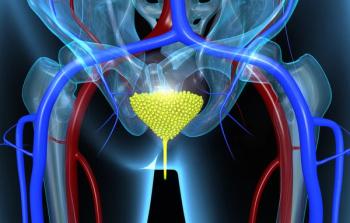
Bladder Preservation Yields Poorer Survival in Urothelial Carcinoma
In patients with stage II to III urothelial carcinoma, bladder-preservation therapy was associated with poorer overall survival compared with radical cystectomy, according to a database study.
In patients with stage II to III urothelial carcinoma, bladder-preservation therapy (BPT) was associated with poorer overall survival (OS) compared with radical cystectomy (RC), according to a database study. Though the differences were lessened with more rigorous statistical adjustments, the long-term survival with BPT was still substantially lower than RC.
“Advantages of BPT include avoiding the short-term and long-term morbidity of a complex operation, maintaining the patients’ native bladder, and improved quality of life,” wrote study authors led by David B. Cahn, DO, MBS, of the Einstein Healthcare Network in Philadelphia. No previous research has compared OS outcomes with BPT and RC, however.
The new study was a retrospective analysis of 32,300 patients in the National Cancer Data Base; of those, 22,680 were treated with RC, and 9,620 were treated with BPT. The BPT patients included 2,540 (26.4%) who were treated with definitive external-beam radiotherapy (50–80 Gy) and 1,489 patients (15.5%) treated with definitive external-beam radiotherapy along with chemotherapy (CRT). The results of the analysis were
The use of BPT increased over time, rising from 28.9% in 2004 to 32.3% in 2013. The use of RC declined from 71.1% to 67.7%. A number of variables were associated with increased use of CRT (considered the strictest definition of BPT), including African American race, two or more comorbid conditions, treatment at lower volume centers, and others. Meanwhile, stage III disease and younger age were associated with decreased CRT compared with RC.
A significant OS advantage was seen with RC compared with BPT, on unadjusted, multivariate, and matched propensity score–adjusted analyses (P < .0001 for all). That advantage was attenuated when stricter BPT definitions were used, and when a “more rigorous statistical adjustment” that controlled for confounding variables was performed.
Those adjustments led to a multivariate hazard ratio (HR) for OS for patients receiving any external-beam radiotherapy compared with RC of 2.115 (95% CI, 2.045–2.188). For definitive external-beam radiotherapy, the HR was 1.87 (95% CI, 1.773–1.972); for CRT, the HR was 1.578 (95% CI, 1.474–1.691). The 5-year OS rate was 48.3% with RC, and 29.9% with CRT.
“The differences in 5-year OS between the optimal BPT and RC cohorts in the current study calls into question the intermediate-term to long-term viability of BPT,” the authors wrote. “Further randomized prospective controlled trials are needed to compare optimal trimodal BPT with RC to study survival outcomes and to better identify candidates, treatment course, and outcomes of bladder preservation.”
Newsletter
Stay up to date on recent advances in the multidisciplinary approach to cancer.






















































































